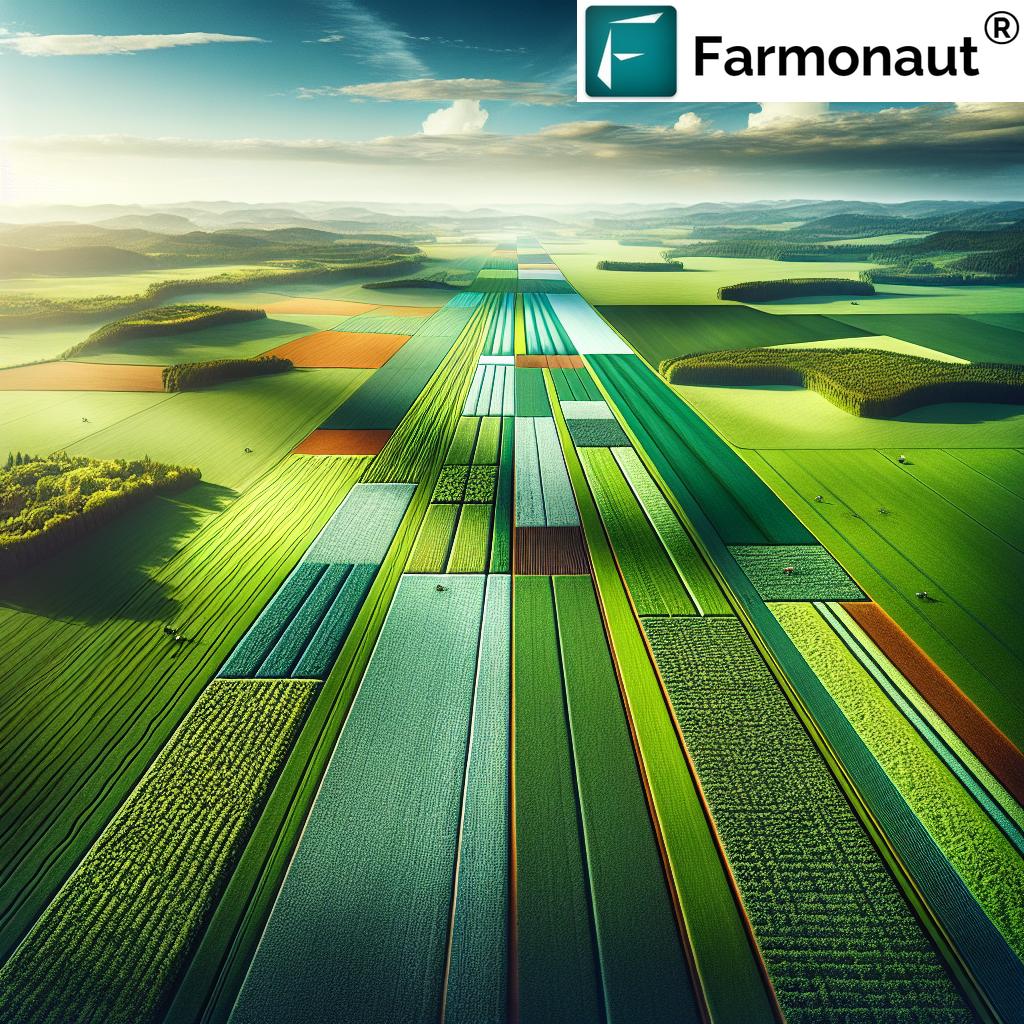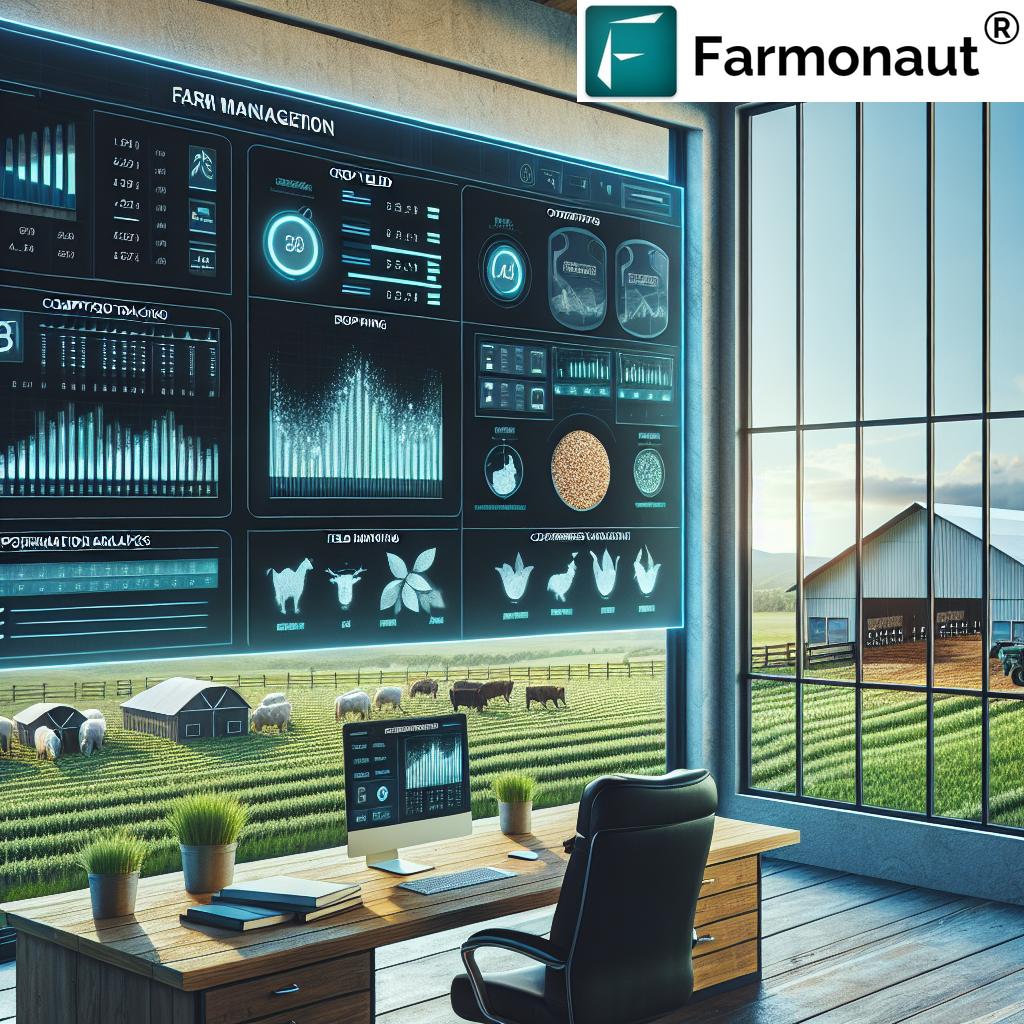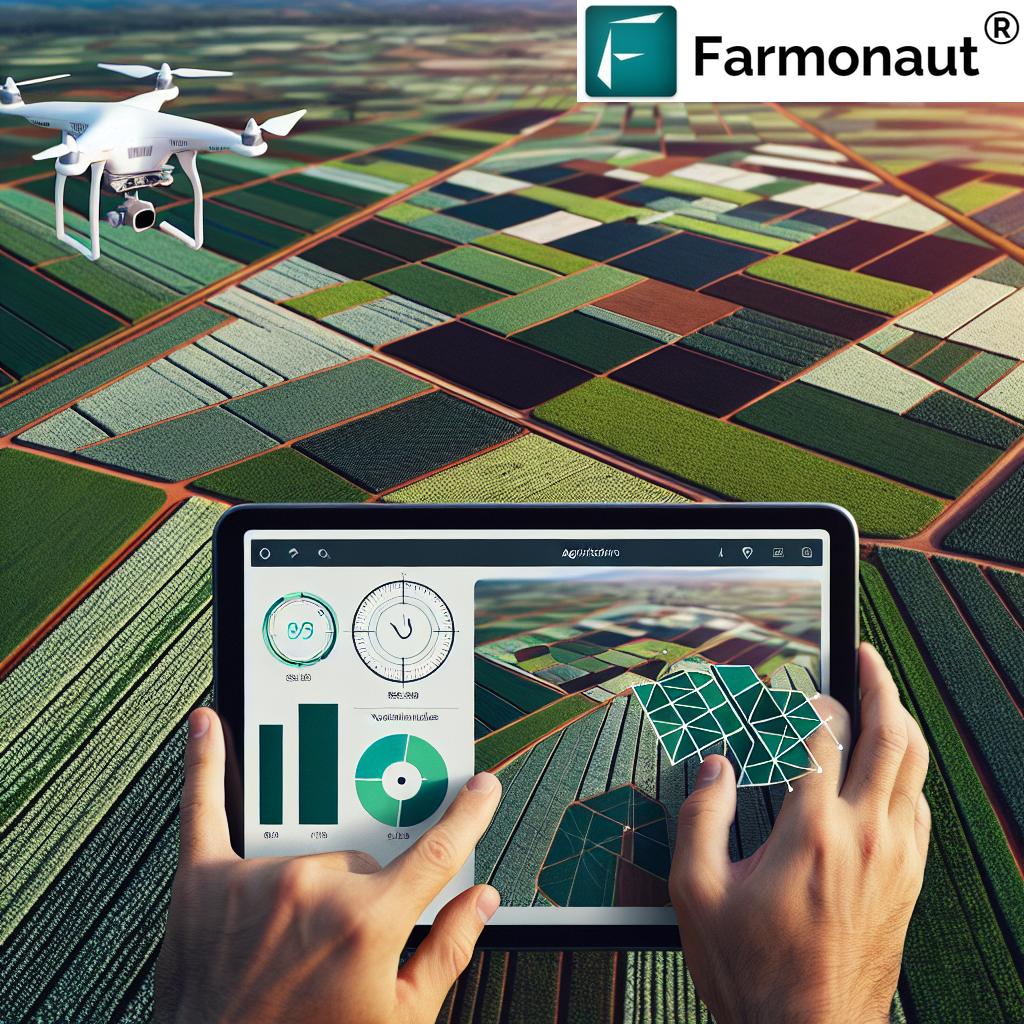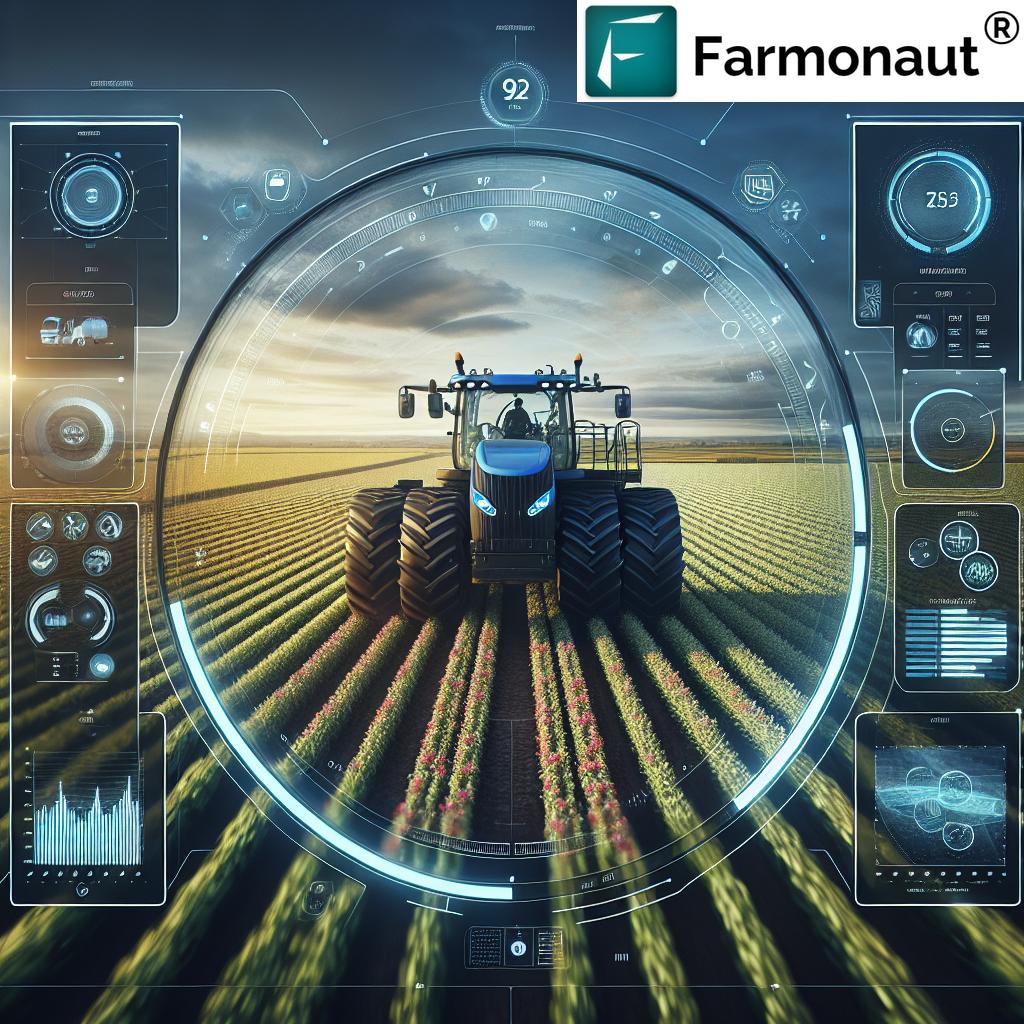Drone Spraying: 7 Shocking Ways It Grows Your Yields!
Introduction: Why Drone Spraying is Revolutionizing Agriculture
Drone spraying, or unmanned aerial vehicle (UAV) pesticide application, is more than just the latest tech buzzword in modern farming—it’s revolutionizing how we approach crop management, forestry care, and resource allocation. With precision agriculture technology taking center stage, we now have the tools to monitor, analyze, and enhance our fields and forests with a level of accuracy and efficiency never before possible.
Utilizing drones equipped with advanced sensors, AI-driven data analysis, and GPS navigation, we are transforming traditional practices like fertilizer, pesticide, and herbicide application into efficient, environmentally friendly, and targeted methods. The impact is profound: less waste, lower costs, and maximized yield, all while promoting sustainable practices and protecting ecological systems.
Read on to discover the seven most shocking ways drone spraying can grow your yields—and how you can leverage technology like Farmonaut to supercharge your crop and forest management!
Drone Spraying: 7 Shocking Ways It Grows Your Yields!
- Ultra-Precise Targeting of Problem Areas
- Significant Reduction in Chemical Usage & Runoff
- Massive Labor & Operational Cost Savings
- Accessibility in Difficult or Hazardous Terrain
- Real-Time Monitoring & Rapid Response
- Disease and Pest Early Detection for Proactive Management
- Consistent & Efficient Application for Higher Yields
1. Ultra-Precise Targeting of Problem Areas
With drone spraying, we use advanced sensors and AI-integrated systems to analyze which areas of our fields or forests need treatment most. Unlike traditional blanket spraying, drones can focus pesticide or fertilizer application only where it’s needed, down to specific patches or even rows. This level of precision reduces waste, maximizes resource use, and ensures sensitive environmental areas or water sources are protected from unnecessary chemical exposure.
2. Significant Reduction in Chemical Usage & Runoff
Modern agricultural drones ensure that treatments are applied precisely and only as much as needed. According to recent studies, precision agriculture technology can reduce chemical usage by up to 30%. This not only optimizes input costs but also minimizes the risk of chemical runoff into streams and rivers, supporting truly environmentally friendly pesticide application and safeguarding aquatic and terrestrial health.
3. Massive Labor & Operational Cost Savings
Deploying drone spraying drastically reduces the need for long hours of manual labor or the operation of costly, fuel-guzzling ground vehicles. We know that, in locations like Illinois, after implementing drones for aerial pesticide application, farmers have reported an average 20% yield increase and huge savings on labor and fuel costs.
With drone spraying covering up to 40 acres per hour—compared to just 2-3 acres with manual methods—farms and forestry areas of virtually any size can be managed more efficiently.
4. Accessibility in Difficult or Hazardous Terrain
Drones easily fly over challenging landscapes, ranging from hilly croplands to dense forest stands. Where traditional equipment would struggle or even create soil compaction and erosion, UAVs glide effortlessly to deliver treatments where needed, improving overall forest health and crop productivity.
- No delay due to physical obstacles
- Reduces operator safety risks
- Ensures uniform treatment in remote regions
5. Real-Time Monitoring & Rapid Response
By integrating drone cameras and live data feeds, we observe changes in crop health instantly. Upon detecting issues, we can deploy drones for rapid intervention, applying pesticides, herbicides, or fertilizers before problems escalate.
This swift action is especially important for disease or pest outbreaks, drought stress, or emerging nutrient deficiencies—making losses a thing of the past.
6. Disease and Pest Early Detection for Proactive Management
With the help of high-resolution drone sensors and cameras, subtle changes in leaf color, canopy density, or plant growth patterns are detected well before symptoms are visible to the naked eye. This allows us to proactively manage outbreaks and protect yields, rather than spend on costly remedial action after problems spread.
- Monitor disease and pest infestations with AI analysis
- Tailor applications for faster recovery and lower input use
- Reduce unnecessary chemical application, protecting natural ecosystems
7. Consistent & Efficient Application for Higher Yields
Unlike manual or tractor-based spraying—which is affected by operator skill, fatigue, and machinery limits—drones ensure a consistent, uniform coverage every time. They minimize missed spots and oversprayed regions, resulting in:
- Improved crop quality and marketability
- Optimal stand health across entire fields and forests
- Increased yield with less resource waste
And by deploying drones according to real-time, satellite-derived vegetation indices (like those provided on the Farmonaut Large Scale Farm Management Platform), every hectare receives the exact treatment needed. This synergy between aerial drone application and data-driven decision making delivers truly world-class, high-yield outcomes.
Empower Your Yield Growth: Try Farmonaut’s Crop Health Monitoring
To unlock even more value from drone spraying and aerial applications, combine UAV insights with Farmonaut’s satellite-based crop health monitoring and farm analytics. Access tools for:
- Real-time crop health and soil moisture monitoring (with crop, plantation & forest advisory solutions)
- Personalized, AI-driven advisories for input optimization
- Resource, fleet, and emissions management tools
- API integrations for developers (see: Farmonaut Farm Data API & Developer Docs)
Available for individual farmers, agribusinesses, and government agencies—Farmonaut’s mission is to make precision agriculture accessible and affordable for everyone.
Advantages of Drone Spraying in Precision Agriculture
The rapid adoption of drone spraying in agriculture and forestry highlights the outstanding impact these technologies offer. Let’s dive into the main advantages and environmental benefits we experience by integrating UAVs into our management systems:
- Precision and Efficiency: Drones, equipped with advanced sensors and GPS navigation, map fields down to the meter. They target specific treatment areas, which drastically reduces chemical waste and ensures only necessary volumes are applied.
- Reduced Labor and Operational Costs: Compared to traditional ground spraying, the automation and speed of drone spraying minimizes the need for operators and expensive machinery, trims labor hours, and lowers fuel consumption.
- Environmental Impact: With less chemical drift and more targeted application, we minimize runoff, protect biodiversity, and ensure water safety, making precision agriculture technology truly sustainable for the long run.
- Reach and Accessibility: Drones fly above challenges that would halt ground vehicles—dense crops, muddy or eroded soils, terraced hills, and even forest canopies.
- Advanced Data Integration: By connecting drone-sourced data with platforms like Farmonaut’s satellite intelligence and AI-based advisory, we can build a 360-degree view of crop conditions for data-driven management.
Drone Spraying vs. Traditional Spraying: Yield and Efficiency Comparison
Below is a comparison of key performance metrics between drone spraying and conventional ground-based spraying practices. Quantitative insights like these help us understand and communicate the real-world impact of embracing aerial pesticide application:
| Practice Type | Estimated Yield Increase (%) | Average Chemical Usage Reduction (%) | Labor Time Required (hrs/ha) | Environmental Impact | Cost Efficiency (Estimated $/ha) |
|---|---|---|---|---|---|
| Drone Spraying | 15–20% | 25–35% | 0.5–1.0 | Low | $15–30 |
| Traditional Spraying | 5–10% | 0–10% | 3–5 | Medium–High | $20–50 |
These numbers are estimated and can vary by location, crop, equipment, and field size. Drones regularly outperform traditional methods for yield improvement, cost savings, and environmental responsibility.
Technological Components of Agricultural Drone Spraying
Let’s explore what sets modern drone spraying operations apart from the past, and how our management practices can thrive through technology and integration.
1. Advanced Sensors and Artificial Intelligence (AI)
- Multispectral and Thermal Sensors detect vegetation stress, water content, and pest damage—in real time.
- AI Algorithms analyze incoming data on-the-fly, optimizing spray patterns, volumes, and timing for each unique field.
Platforms such as Farmonaut use a similar approach for carbon footprint tracking, ensuring responsible chemical application and measuring environmental effects right from above.
2. GPS & Mapping Technology
- GPS-guided drones use high-precision mapping—down to sub-meter accuracy—for flight navigation and application control.
- Operators can set geofences, ensuring no-spray zones (waterways, sensitive habitats) remain untouched.
3. High-Resolution Cameras: Early Detection is Key
- Drones fitted with HD and multispectral cameras allow us to monitor plant growth and catch disease or pest issues before yield suffers.
- These insights feed into platforms like Farmonaut’s traceability solution for transparency from farm to supply chain.
4. Real-Time Data Integration & Analysis
Drone data, when combined with Farmonaut’s satellite and AI systems, offers a holistic understanding of field dynamics. This enables variable rate application, season-long monitoring, and maximized efficiency.
Challenges and Considerations in Adopting Drone Spraying
While the advantages of drone spraying are clear, we should also consider operational, regulatory, and economic factors before making the transition.
- Regulatory Compliance: Operating agricultural drones requires pilots to have an appropriate drone pilot’s license, aerial applicator’s license, and state pesticide applicator’s license (as per FAA and local regulations in locations such as the US). Adherence to drone regulations in agriculture is crucial for both safety and effectiveness.
- Initial Investment & Maintenance: Upfront costs for equipped drones, software, and training can be significant. Regular maintenance and software updates are essential to maintain optimal performance.
- Weather Dependency: Adverse conditions (wind, storms, heavy rain) limit flight operations and may require flexible scheduling for timely, precise application.
- Data Security & Privacy: Since drones collect sensitive management data, robust protocols for data privacy and secure storage are mandatory to maintain trust and comply with regulations.
Mitigating these challenges involves choosing trusted providers, having proper training, and integrating drone operations with AI-driven software to automate as much of the planning, execution, and compliance reporting as possible.
Farmonaut: Empowering Precision Agriculture Through Data
Farmonaut is dedicated to making precision agriculture affordable and accessible to everyone. We leverage satellite imagery, AI, blockchain, and machine learning to deliver deep insights, guidance, and tools for maximized productivity with minimal waste. Here are some key ways Farmonaut supports your drone spraying journey and enhances technology-driven decision-making:
- Satellite-based Crop Health Monitoring: Actionable vegetation health indices (NDVI), soil moisture, and stress maps for targeted intervention.
- AI-Based Advisory Systems (Jeevn AI): Personalized recommendations rooted in real-time analysis—for smarter crop nutrition, disease response, and input management.
- Blockchain Traceability: Full transparency for your crops and forest products, protecting against counterfeit and supporting sustainable farming.
- Resource & Fleet Management: Optimize your drone, vehicle, and equipment fleets via Farmonaut’s Fleet Management Platform.
- Carbon Footprinting & Sustainability: Live tracking of greenhouse gas emissions and resource usage, supporting ESG goals and regulatory compliance.
- Crop Loan and Insurance: Unlock instant support for financial verification on farm loans and agri-insurance using satellite monitoring data.
With offerings via web, iOS, Android, and robust API access, Farmonaut fits seamlessly into any farm or forestry workflow, regardless of scale.
Ready to Get Started? Check Our Subscription Plans:
Future Prospects of Drone Spraying in Agriculture and Forestry
The journey doesn’t end here. As drone spraying technology matures, the potential for smarter, even more sustainable agriculture and forestry expands rapidly.
- Swarming Technology: With multiple drones operating in coordinated fashion, we cover larger fields and forests in less time, delivering fast, uniform aerial pesticide application and data collection.
- Integration with Satellite & IoT Sensors: Combining drone application data with platforms like Farmonaut’s blockchain traceability, resource tracking, and satellite insights for true 24/7 monitoring.
- Hardware Advancements: Improvements in UAV payloads, battery life, and obstacle avoidance mean even greater efficiency and field access.
- Fully Automated Drone Fleets: Cloud-connected systems that plan, execute, and verify treatments without human intervention—driving both economic and environmental gains.
Want to expand your management toolkit? Farmonaut’s large scale farm management platform (see here) lets you integrate all your drone, sensor, and satellite data for portfolio-wide insights.
FAQ: Drone Spraying in Agriculture & Forestry
What is drone spraying and how does it work?
Drone spraying refers to the use of unmanned aerial vehicles (UAVs) equipped with spraying equipment, sensors, and GPS to apply fertilizers, pesticides, or herbicides precisely and efficiently to crops or forest areas. These drones use pre-programmed routes and real-time data to deliver treatments where they are most needed.
What are the main benefits of drone spraying compared to traditional methods?
Main benefits include: higher application accuracy, reduced chemical and water usage, significantly lower labor and fuel costs, minimized environmental impact, and faster coverage of large or difficult terrain. Studies show up to 30% chemical savings and up to 20% yield increase after drone adoption.
What types of crops and forestry can benefit from drone spraying?
Most field crops, orchards, vineyards, plantations, and even dense forest areas can benefit from drone spraying. Anywhere uniform, timely, and targeted application is necessary (even on challenging terrain) is an ideal use case.
What legal requirements are there for operating agricultural drones?
Laws vary by country and region but usually require a UAV pilot’s license, proper crop pesticide applicator certification, and compliance with country-specific aerial application regulations.
How does Farmonaut support drone spraying operations?
Farmonaut enhances drone yield improvement by providing satellite-based crop health monitoring, AI-driven advisory, real-time analytics, resource management, traceability, and carbon footprint tracking. This results in optimized drone missions, reduced resource waste, and better decision-making across all crops and forestry operations.
Can I integrate my drone data with Farmonaut’s platform?
Yes! With Farmonaut’s API (here), developers and agribusinesses can sync drone insights with platform data for enhanced field management, compliance, and reporting.
Conclusion: Embrace the Future of Efficient, Sustainable Crop Management
Drone spraying is not a buzzword—it’s the next chapter in revolutionizing agriculture and forestry. By embracing precision agricultural drones, integrating AI and satellite data (as in the Farmonaut platform), and adhering to regulatory best practices, we open the door to:
- Higher yields with fewer inputs
- Lowered costs and improved cost efficiency
- Environmentally friendly pesticide application with minimized chemical footprint
- Better risk management and sustainability across our operations
Let’s future-proof our fields and forests, protect our natural resources, and deliver the food and materials our communities need—with less waste and more value. Start your journey into smarter, greener agriculture today.
Ready to transform your farm, plantation, or forest management? Sign up with Farmonaut for real-time crop health monitoring, AI-based advisories, blockchain traceability, and more!
Farmonaut is your partner in revolutionizing precision agriculture—delivering affordable, accessible, and innovative solutions that help you thrive in the data-driven world of modern farming.













